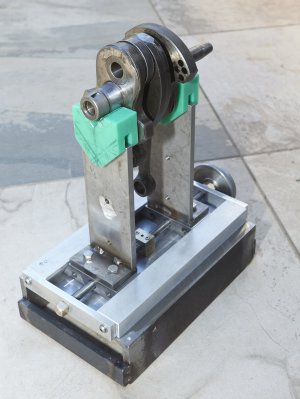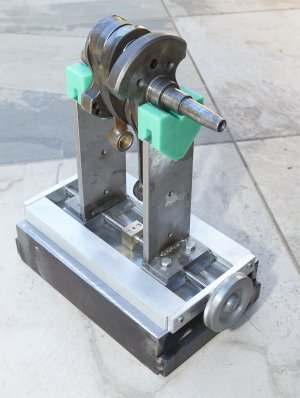- Joined
- Jun 7, 2016
- Messages
- 361
Nice, to be honest.. this was a first for me aswell. My race bike big end bearing was about shot and in need of replacing so I thought it cant be that hard? Well... it took me ages to get the crank trued up, it took a while for me to realise where to give it a wack.
I enjoy making tools also but lacking a milling machine makes things more challenging sometimes.
I will follow your progress with great interest, keep up the good work!
One thing I will mention is that my DTI was picking up on the ball bearings rotating, next time I would make some discs with bushings, but the V's you have will work perfectly well.
Sent from my SM-G950F using Tapatalk
I have not actually pushed my crank apart yet. And that means I haven't pushed it together. Did you build special tools to hold the crank while you pressed out the crank pin. I can see you have a single where as my engine is a twin, so a few more variables. In theory I appreciate the long winded process of pressing the crank back together....... did you check the runout in stages as you pressed your crank together?
In regards to bearings on the stand, I am planning to mount a set of bearings (which are removable) but only for use to do a static balance of my flywheel/clutch assembly. My bike has a dry clutch like a car so the combined mass of flywheel and clutch pressure plates etc is considerable. I thought I could get a smoother engine by making sure that assembly is as balanced as I can make it.
Mal








